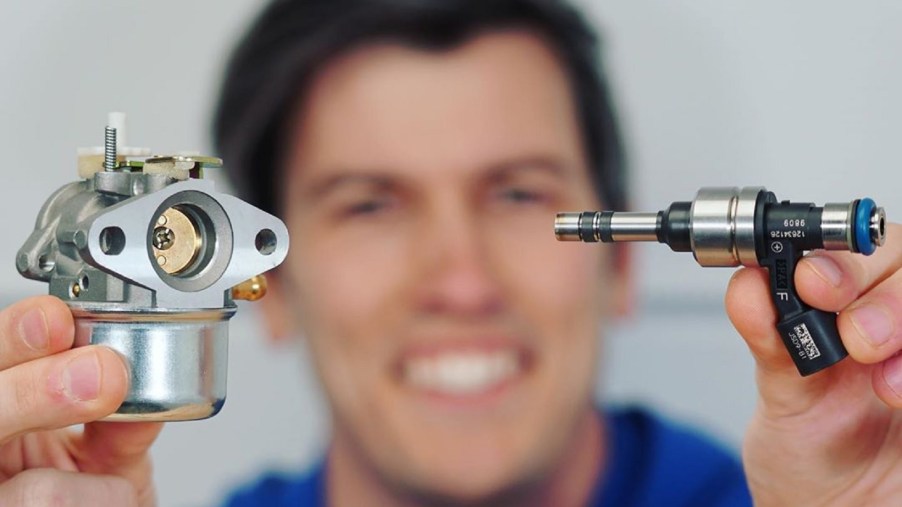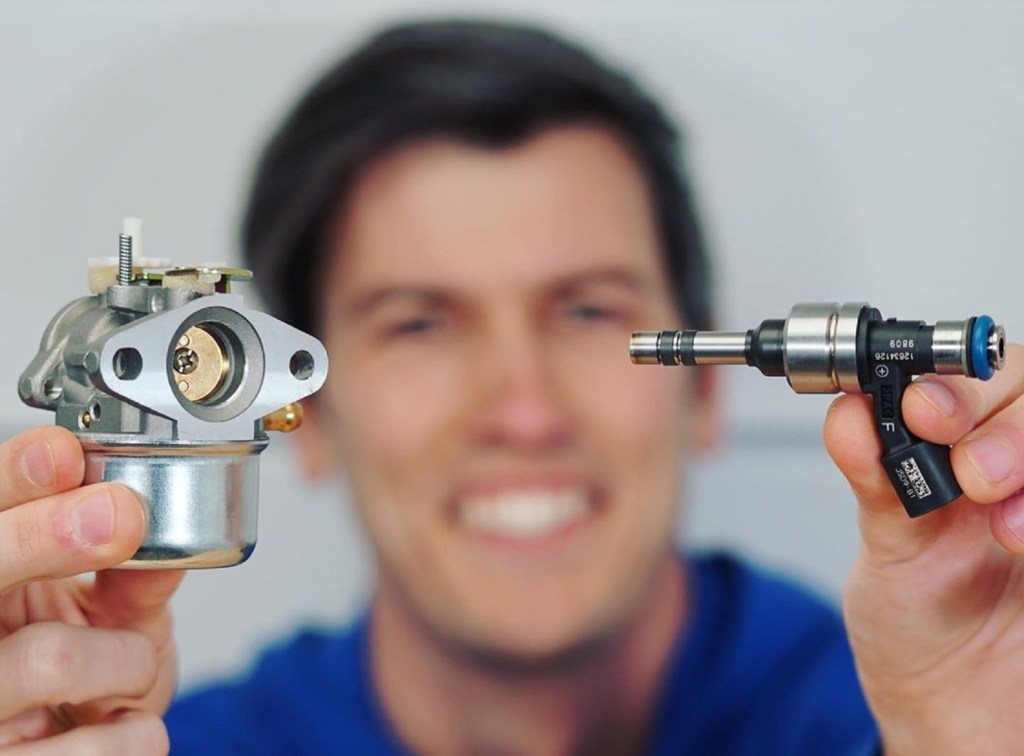
Your Fuel Injectors Really Do Need to Be Cleaned
Oil and coolant aren’t the only fluids involved in car and motorcycle maintenance. But even if you change your transmission fluid, if your vehicle isn’t electric, it’s not going to run without gasoline or diesel. Or rather, it won’t run unless the fuel makes its way into the combustion chamber. Which, in modern vehicles, is the work of your fuel injectors. And just like your engine occasionally needs cleaning, so do your fuel injectors.
How your fuel injectors work

Before fuel injection, all ICE vehicles used carburetors. A few motorcycles, such as Janus’ deliberately-simple lineup and some off-road bikes, still use them. But apart from that, unless you have an EV, your vehicle has fuel injectors. Early on, some systems were purely mechanical. But now, it’s all electronic.
There are several kinds of EFI systems in use today, Cars.com reports. But whether your car or motorcycle has direct or port injection, the fuel injectors work the same, Car and Driver explains. A pump sends fuel to the injector, which looks not unlike a garden hose nozzle. It atomizes the fuel into a fine spray, which mixes with incoming air in a precise ratio. The piston compresses this air-fuel mixture, and it ignites.
Carburetors work on the same principles as fuel injectors, Motorcyclist explains. But where fuel injection is active, thanks to computers and sensors, carburetors are passive and purely mechanical. They can’t adjust themselves to changing temperature or air pressure, and they release more emissions. Plus, fuel injectors are more reliable. At least until something goes wrong.
How to tell if they need cleaning
To be fair, modern fuel injectors rarely fail. And in contrast to things like timing belts, very few if any manufacturers list injector maintenance schedules, Cars.com reports. But it does happen. Clogged injectors caused my first car’s first breakdown.
Plugged fuel injectors have a few symptoms, Firestone reports. The most obvious are misfires and rough idling, as well as a ‘bouncing’ tachometer needle. Poor fuel economy is another, as is the Check Engine Light, CarBibles reports. Also, you may have trouble accelerating, or your engine may race suddenly, ItStillRuns reports. Eventually, your engine may not start at all.
How do the fuel injectors get clogged? Although modern gasoline contains cleaning additives, combustion can still be a dirty process, leading to carbon buildup and other by-products. Your motor oil helps wash some of these deposits away, but it’s not always enough. That’s why rotary engines need to be redlined regularly: it burns away the deposits.
But these fuel additives aren’t always enough, Advance Auto Parts explains. If your car or motorcycle has a rusty fuel tank or a broken fuel filter, debris could end up in the fuel injectors. Because injectors atomize the fuel, their openings are tiny, meaning it doesn’t take much to cause a blockage.
Fuel injector cleaner may not be enough
There are a few ways to deal with clogged injectors. For blockage prevention or minor blockages, you can use a fuel injector cleaner, The Drive reports. It typically contains a detergent and a lubricant, the Chicago Tribune explains, to flush away deposits and provide future protection. Add it to your fuel tank, go for a drive, and the gunk is flushed away.
There are several well-regarded injector cleaners on the market today. Some budget options use polybutene amide (PBA or PIBA) or polyisobutene (PIB), Gold Eagle reports. But while these can clean injectors and valves, they can sometimes increase carbon buildup, KnowYourParts reports. The best option is polyetheramine (PEA), which cleans the entire fuel system—not just the injectors—without leaving deposits. But for the best results, you’ll likely have to run the cleaning process multiple times.
However, what if your fuel injectors are really blocked up? Say, because they’re in a motorcycle that hasn’t run in years. PEA alone won’t cut it, Motorcyclist explains. At that point, your best bet is a trained mechanic, The Drive reports. But you can fix the problem yourself with the right tools.
To do that, you’ll need an injector cleaning kit. Some hook directly to the engine’s fuel rails, while others require you to hook up each injector individually. Regardless of which you go with, though, they essentially force high-pressure cleaner through the injectors for additional cleaning power. Some hook up to a power outlet, while others use compressed air.
And if the cleaning kit doesn’t solve the problem, you’ll likely have to replace the fuel injectors completely.
Follow more updates from MotorBiscuit on our Facebook page.


